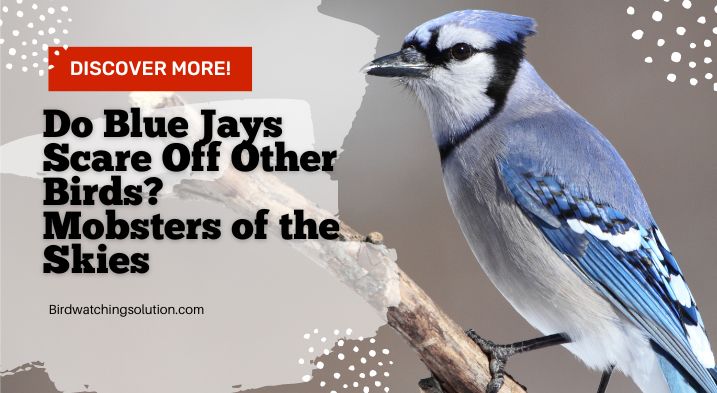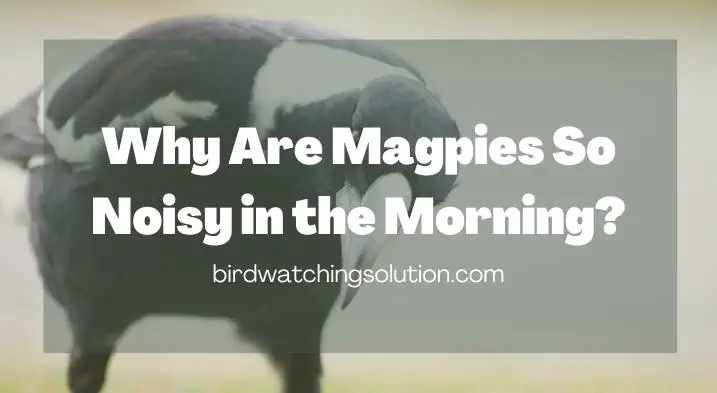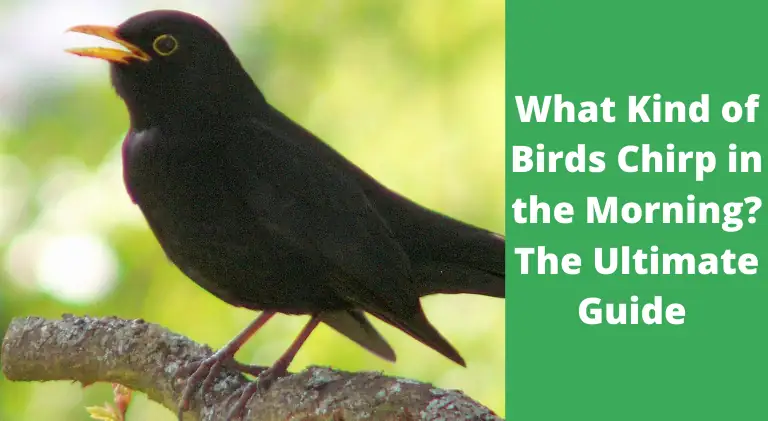Can Hawks be Pets? Legalities and Challenges of Hawks as Pets
The popularity of pet birds is on the rise, and many people are considering adopting a hawk as their next feathered friend. However, before you go out and buy a hawk, it’s important to understand the unique challenges and legalities of keeping these birds as pets. Can hawks be pets?
Contrary to popular belief, hawks are not suitable pets for most people. These birds of prey have specialized diets, high energy levels, and require large amounts of space for exercise and hunting. Furthermore, most people cannot possess hawks as pets due to federal and state laws regulating their possession.
Despite their impressive hunting skills and striking appearance, hawks are not the right choice for most pet owners.
In this article, we will explore the biology and behavior of hawks, the legalities of keeping them as pets, and the challenges that come with caring for these birds.
We will also discuss alternative ways to experience the beauty of hawks without actually keeping them as pets
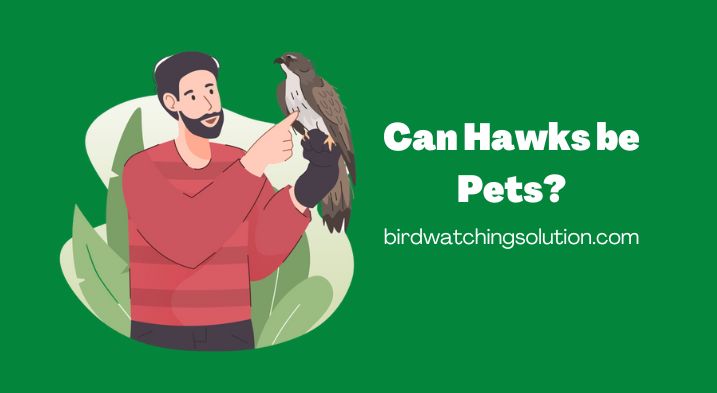
The Biology and Behavior of Hawks:
Hawks are birds of prey that belong to the family Accipitridae. They are known for their sharp eyesight and powerful talons, which they use to hunt small mammals, birds, and reptiles. Hawks have a variety of physical characteristics that are well-suited to their hunting lifestyle.
They have strong, pointed beaks for tearing flesh, and their wings are typically long and narrow, allowing them to soar and glide with great agility. One of the most distinctive physical traits of hawks is their keen eyesight.
They have large, forward-facing eyes that provide them with excellent depth perception and the ability to spot prey from a distance. Hawks also have keen hearing, which they use to locate prey that is hidden or moving through tall grass or brush.
When it comes to hunting, hawks have a range of different techniques that they use to catch their prey. Some hawks, such as the red-tailed hawk, are “soarers” that use their keen eyesight to spot prey from a high vantage point, and then dive down to grab it with their talons.
Other hawks, such as the harris’s hawk, are “hunters” that actively search for prey on the ground, using their agility and stealth to sneak up on their quarry.
The diet of hawks varies depending on the species and the region they live in. In general, hawks feed on small mammals such as rodents, rabbits, and squirrels, as well as birds, reptiles, and insects. Some hawks, such as the red-shouldered hawk, have a more specialized diet and feed primarily on snakes. Hawks typically hunt and eat their prey whole, and will cache excess food for later consumption.
Point to Pounder: Hawks have excellent eyesight, and can see up to eight times better than a human. This allows them to spot prey from great distances, and to see in low-light conditions.
The Legalities of Keeping Hawks as Pets:
In the United States, the possession of hawks is regulated by federal and state laws. These laws exist for a number of reasons, including the protection of wild bird populations, the prevention of animal cruelty, and the promotion of public safety.
At the federal level, the possession of hawks is governed by the Migratory Bird Treaty Act of 1918. This law prohibits the possession, transport, and trade of most species of wild birds, including hawks, without a permit.
In order to obtain a permit, an individual must demonstrate that they have the proper facilities, knowledge, and experience to care for the bird and that the possession of the bird will not harm the species or the environment.
In addition to federal laws, many states also have their own regulations governing the possession of hawks. These laws can vary widely, with some states allowing the possession of hawks under certain circumstances, and others prohibiting it altogether.
For example, in California, it is illegal to possess any species of hawk without a permit, except for certain species of non-native hawks that are commonly kept as pets.
In Texas, on the other hand, individuals can possess most species of hawks without a permit, provided they are used for falconry or other approved purposes.
In general, the laws governing the possession of hawks are designed to protect the birds and the environment and to prevent individuals from keeping these birds as pets without the proper knowledge and experience.
Violation of these laws can result in fines, imprisonment, and the confiscation of the hawk. For these reasons, it is important for individuals considering keeping a hawk as a pet to research the relevant laws and regulations in their state before making a decision.
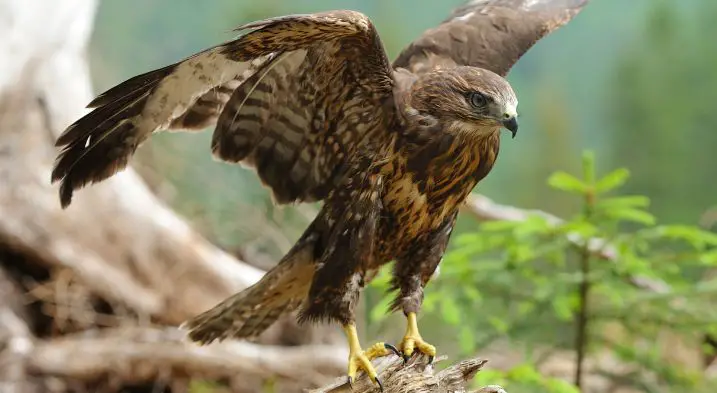
The Challenges of Keeping Hawks as Pets
Hawks are beautiful and fascinating birds, but they are not suitable pets for most people. Caring for a hawk can be challenging due to their specialized diet, high energy levels, and need for large amounts of space.
Specialized Diet
Hawks are carnivorous birds of prey that require a diet high in protein and fat. In the wild, they hunt and eat small mammals, birds, and reptiles, but it can be difficult to replicate this diet in captivity.
Some pet hawks may be fed commercially-prepared frozen diets, but these can be expensive and may not provide all the nutrients the bird needs.
High Energy Levels
Hawks are active and agile birds that require large amounts of space and exercise to stay healthy and happy.
In the wild, they use their wings to soar and glide for long periods of time, and they also use their talons to climb and perch.
In captivity, it can be difficult to provide hawks with the space and opportunities for exercise that they need. This can lead to boredom, stress, and behavioral problems.
Need for Large Amounts of Space
Hawks are not suitable for life in a small cage or apartment, and they need a large, secure enclosure that provides them with enough space to fly and hunt.
In addition to the space requirements, hawks also require specialized care and attention, including regular training and handling.
This can be time-consuming and demanding for pet owners, and may not be feasible for those with busy schedules or limited space.
Pet Hawks Eat A Lot Of Food
It is true that pet hawks eat a lot of food. Hawks are carnivorous birds of prey, which means that they require a diet high in protein and fat.
In the wild, hawks hunt and eat small mammals, birds, and reptiles, and they can consume a significant amount of food each day.
For example, a red-tailed hawk may eat up to 1.5 pounds of food per day, which is equivalent to about a quarter of its body weight.
The amount of food that a pet hawk needs will depend on its size, age, and level of activity. Juvenile hawks, which are still growing, may require more food than adult hawks.
Hawks that are used for falconry, or other forms of hunting, may also require more food to maintain their energy levels.
Providing a pet hawk with the right amount of food can be challenging, and it can be expensive. Commercially-prepared frozen diets are available for pet hawks, but these can be expensive and may not provide all the nutrients that the bird needs.
Some pet owners may choose to feed their hawks fresh, whole prey, such as mice, rabbits, or birds, but this can be difficult to obtain and may not be suitable for all hawks.
Pet Hawks Cost A Lot Of Money
It is true that pet hawks can be expensive to keep. While the initial cost of purchasing a hawk may not be exorbitant, the ongoing costs of caring for a hawk can add up quickly. Hawks have specialized dietary and housing needs, and providing for these can be costly.
One of the major expenses associated with keeping a pet hawk is its food. As mentioned earlier, hawks are carnivorous birds of prey that require a diet high in protein and fat.
In the wild, they hunt and eat small mammals, birds, and reptiles, but it can be difficult to replicate this diet in captivity. Commercially-prepared frozen diets are available for pet hawks, but these can be expensive and may not provide all the nutrients that the bird needs.
Some pet owners may choose to feed their hawks fresh, whole prey, such as mice, rabbits, or birds, but this can be difficult to obtain and may not be suitable for all hawks.
Another expense associated with keeping a pet hawk is its housing. Hawks are not suitable for life in a small cage or apartment, and they require a large, secure enclosure that provides them with enough space to fly and hunt.
The enclosure should be safe and secure and should provide the hawk with a variety of perches and surfaces to climb on.
Apart from the cost of the enclosure itself, pet owners will also need to provide the hawk with regular maintenance and cleaning, as well as fresh bedding materials.
In addition to the costs of food and housing, pet owners will also need to consider the costs of veterinary care, training, and handling. Hawks require regular check-ups and treatments from a veterinarian who is experienced with birds of prey.
They also require regular training and handling to maintain their health and behavior. These costs can add up over time and can be significant for pet owners.
Alternatives to Keeping Hawks as Pets
If you’re fascinated by hawks but not ready to take on the challenges of keeping them as pets, there are other ways to experience the beauty and majesty of these birds.
Here are a few alternatives to consider:
Visit a Wildlife Sanctuary
One of the best ways to see hawks up close is to visit a wildlife sanctuary or rehabilitation center.
These facilities provide a safe and natural environment for injured, orphaned, or displaced wild animals, including hawks.
Many sanctuaries offer guided tours or educational programs, where you can learn about the biology and behavior of hawks and see them in their natural habitat.
Participate in a Falconry Program
Falconry is the ancient art of hunting with birds of prey, including hawks.
While falconry is not the same as keeping a pet hawk, it can provide a unique and exciting way to learn about and interact with these birds.
Many falconry programs offer hands-on experiences, where participants can work with trained falconers to fly and hunt with hawks.
Point to Pounder: Hawks have powerful talons, which they use to grab and hold onto their prey. Some species of hawks have talons that are larger and stronger than the claws of a grizzly bear.
Watch Hawks in the Wild
If you’re unable to visit a wildlife sanctuary or participate in a falconry program, you can still see hawks in their natural habitat.
Hawks are found throughout North America and can be seen in a variety of environments, from open fields and forests to urban parks and backyards.
With a little patience and a good pair of binoculars, you can observe hawks in their natural habitat and appreciate their beauty and grace.
Last Minute Thoughts!
So can hawks be pets? while hawks can be beautiful and fascinating animals, they are not suitable pets for most people.
Their specialized diet, high energy levels, and need for large amounts of space can make them difficult and demanding pets, and the possession of hawks is heavily regulated by federal and state laws.
For these reasons, it is important for individuals considering keeping a hawk as a pet to carefully research the relevant laws and regulations and to consider the challenges and responsibilities that come with caring for these birds.
However, if you’re fascinated by hawks and want to learn more about these birds, there are other ways to experience their beauty and majesty. You can visit a wildlife sanctuary, participate in a falconry program, or watch hawks in the wild.
These alternatives provide unique and exciting opportunities to learn about and appreciate hawks, without the challenges and responsibilities of keeping them as pets.

![What Do Baby Cardinals Eat? – [Ultimate Guide]](https://birdwatchingsolution.com/wp-content/uploads/2021/12/What-Do-Baby-Cardinals-Eat_.webp)

